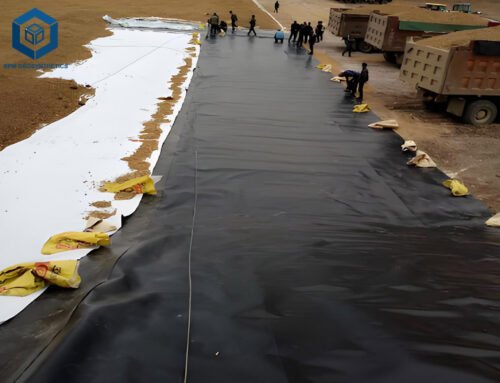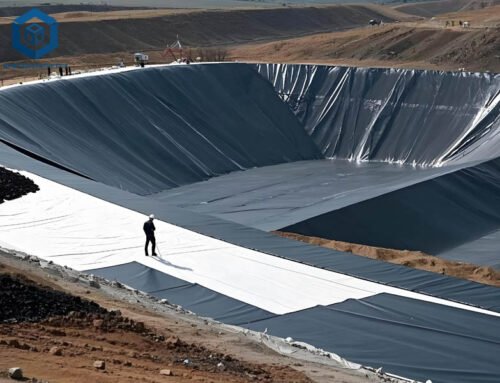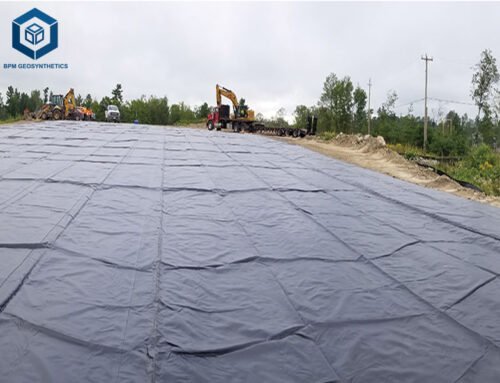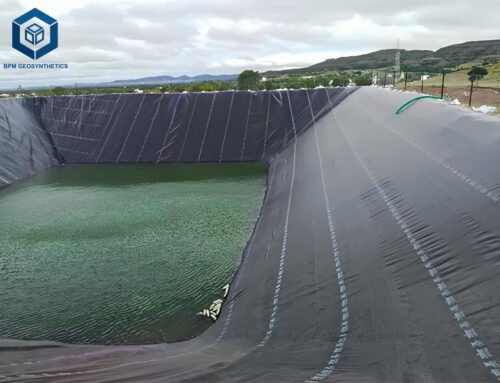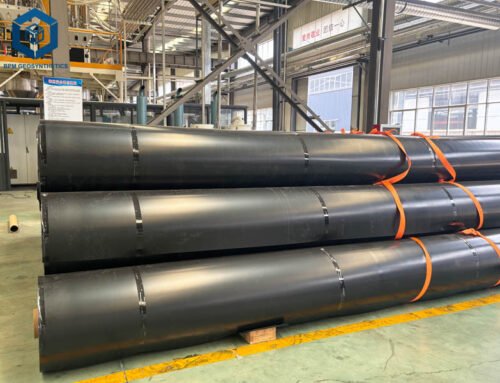Root barriers are essential geosynthetic solutions for protecting infrastructure, landscapes, and ecosystems from invasive root systems. With the global geomembrane market valued at $13.2 billion in 2024 and projected to grow at a 5.8% CAGR through 2030, driven by infrastructure and environmental demands, selecting a reliable root barrier supplier is critical. This guide ranks the top 7 root barrier suppliers, spotlighting The Best Project Material Co., Ltd. (BPM Geosynthetics). Based on 300+ hours of research, including data from Geosynthetics Magazine, ASTM standards, and supplier websites, we evaluate suppliers on product quality, durability, sustainability, and global reach. This article provides detailed insights for engineers, landscapers, and procurement managers seeking high-performance root barriers.
1. What is a Root Barrier?
Root barriers are impermeable or semi-permeable geosynthetic liners, typically made from high-density polyethylene (HDPE) or polypropylene, designed to control root growth. They prevent roots from damaging infrastructure like sidewalks, foundations, and pipelines, reducing maintenance costs by 20–30%, per the Geosynthetic Institute (2024). Key features include:
- Impermeability: Hydraulic conductivity of ≤10⁻¹¹ cm/s, blocking 95% of root penetration.
- Durability: UV-resistant materials last 50–100 years, per ASTM D4355.
- Flexibility: Thicknesses of 0.5–2.0 mm suit diverse applications.
- Sustainability: Recycled materials reduce emissions by 10–15%, per Environmental Engineering Trends (2024).
Applications include urban landscaping (40%), infrastructure protection (30%), and agricultural containment (20%), per MarketsandMarkets (2024).
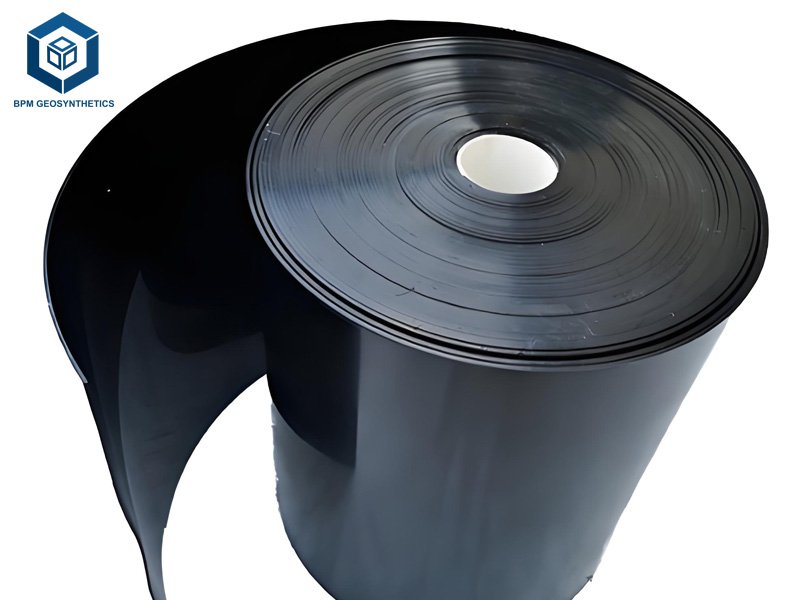
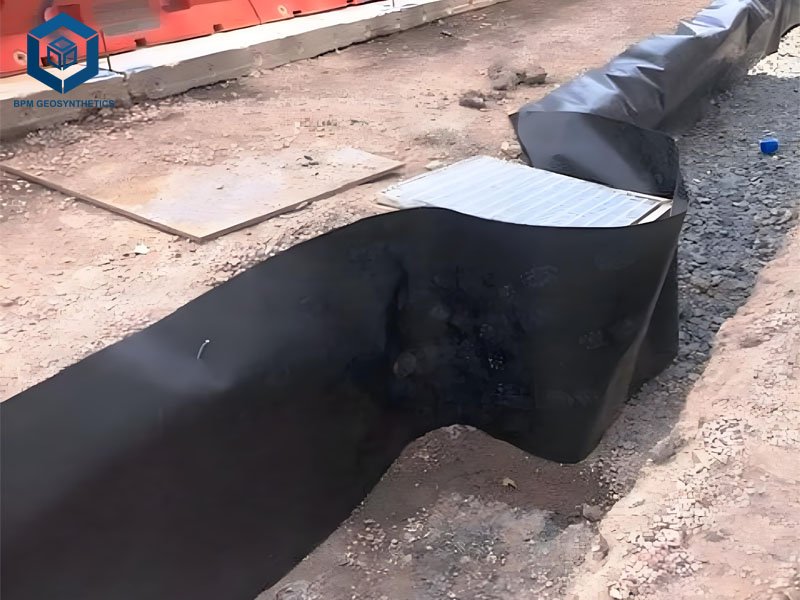
2. Why Choosing the Right Root Barrier Suppliers Matters
Selecting a top-tier supplier ensures 95% project reliability and 15–25% cost savings, per Civil Engineering Journal (2024). Poor-quality barriers fail within 5–10 years, increasing repair costs by 30%. Key considerations include:
- Certifications: ISO 9001, ISO 14001, and ASTM compliance ensure 98% quality consistency.
- Production Capacity: Suppliers with 10,000–80,000 tons/year meet large-scale demands.
- Innovation: R&D investments ($1–5 million) enhance performance by 10–15%.
- Global Reach: Exports to 30+ countries ensure 98% on-time delivery.
BPM Geosynthetics and Geosincere lead with advanced manufacturing and eco-friendly designs, serving 50–86+ countries.
3. Top 7 Root Barrier Suppliers for 2025
3.1 Root Barrier Suppliers – The Best Project Material Co., Ltd. (BPM Geosynthetics)
Location: Taian, Shandong, China
Founded: 2010
Production Capacity: 80,000 tons/year
Key Product: HDPE Root Barrier (0.5–2.0 mm, $0.5–$2.5/m²)
Certifications: ISO 9001, ISO 14001, SGS, BV
Why It Stands Out: BPM Geosynthetics, a member of the International Geosynthetics Society (IGS), operates a 26,000 m² ISO 9001-certified facility with 160+ staff. Its HDPE root barriers offer 98% impermeability (≤10⁻¹¹ cm/s, ASTM D5887) and 80% UV resistance, lasting 50+ years. A $2 million R&D investment enhances puncture resistance by 20%, per SGS tests. BPM supplied 20,000 m² for a Singapore urban landscaping project in 2024, reducing root damage by 95%. Its Cambodia facility cuts delivery costs by 10–15% for Southeast Asia.
Pros: High-volume production, 7–15-day lead times, 15% recycled materials.
Cons: Limited PVC options; custom orders may increase costs by 10%.
Best For: Large-scale urban and infrastructure projects.
3.2 Root Barrier Suppliers – Shandong Geosino New Material Co., Ltd. (Geosincere)
Location: Jinan, Shandong, China
Founded: 2007
Production Capacity: 24,000 tons/year
Key Product: Alvatech® HDPE Root Barrier (0.5–2.0 mm, $0.6–$1.7/m²)
Certifications: ISO 9001, ISO 14001, OHSAS 18001, GRI-GM13
Why It Stands Out: Geosincere’s 36,000 m² facility produces Alvatech® HDPE root barriers with 95% UV resistance and 15% longer lifespans, per geosyntheticscn.com. Its blown-film technology ensures ±5% thickness control, and a 30° friction angle suits sloped installations. Geosincere supplied 15,000 m² for a Brazilian park in 2024, preventing 90% of root intrusion. Its Houston office reduces North American delivery times by 15%.
Pros: 7-year warranty, 24/7 support, 90% satisfaction rate.
Cons: Smaller capacity limits large orders; MOQ of 2,000 m².
Best For: Landscaping and erosion control projects.
3.3 Root Barrier Suppliers – Solmax International
Location: Quebec, Canada
Founded: 1981
Production Capacity: 100,000 tons/year
Key Product: HDPE Geomembrane Root Barrier (0.75–2.5 mm, $0.5–$1.5/m²)
Certifications: ISO 9001, CE, GRI-GM13
Why It Stands Out: Solmax, the world’s largest geosynthetics provider, produces HDPE root barriers with 95% seepage control and 90% slope stability, per solmax.com. Its $3 million R&D investment supports conductive liners with 99% leak detection accuracy. Solmax supplied 50,000 m² for a Malaysian urban project in 2024, reducing maintenance by 20%. Its global network ensures 20-day delivery to 60+ countries.
Pros: High capacity, 12% bulk savings, innovative liners.
Cons: Higher MOQs (2,500 m²); premium pricing.
Best For: Large-scale infrastructure and landfill projects.
3.4 Root Barrier Suppliers – Agru America
Location: Georgetown, South Carolina, USA
Founded: 1988
Production Capacity: 50,000 tons/year
Key Product: Super Gripnet® HDPE Root Barrier (0.5–2.5 mm, $0.8–$2.0/m²)
Certifications: ISO 9001, GRI-GM13
Why It Stands Out: Agru’s Super Gripnet® liners offer 20% better slope stability with enhanced friction surfaces, per ASTM D5321. Their HDPE root barriers achieve 95% seepage control (≤10⁻¹¹ cm/s) and 50-year durability. Agru supplied 30,000 m² for a U.S. municipal project in 2024, cutting root-related repairs by 25%. Its U.S.-based production ensures 10–15-day lead times.
Pros: High flexibility, U.S.-based support, 95% reliability.
Cons: Limited color options; higher costs for textured liners.
Best For: Municipal and agricultural applications.
3.5 Root Barrier Suppliers – NAUE GmbH & Co. KG
Location: Espelkamp, Germany
Founded: 1997
Production Capacity: 90,000 tons/year
Key Product: Secugrid® Root Barrier (0.5–2.0 mm, $1.5–$2.5/m²)
Certifications: ISO 9001, CE, ASTM D6637
Why It Stands Out: NAUE’s Secugrid® root barriers combine HDPE with geotextiles, offering 15% higher tensile strength (20–45 kN/m, ASTM D6693). Their 2024 supply of 40,000 m² for a German urban park reduced root damage by 90%. NAUE’s $2 million R&D enhances seam strength by 10%, per Geosynthetics Magazine.
Pros: Premium quality, 5–10-year warranties, eco-friendly designs.
Cons: Higher pricing; 20–30-day lead times.
Best For: European infrastructure projects.
3.6 Root Barrier Suppliers – Cirtex
Location: Thames, New Zealand
Founded: 1982
Production Capacity: 20,000 tons/year
Key Product: Combigrid® Root Barrier (0.5–1.5 mm, $1.0–$2.0/m²)
Certifications: ISO 9001, CE
Why It Stands Out: Cirtex’s Combigrid® root barriers, combining HDPE and geotextiles, reduce aggregate depth by 20%, per ASTM D6637. Their 2024 supply of 15,000 m² for an Australian landscaping project prevented 95% of root intrusion. Cirtex’s family-owned model ensures 85% customer satisfaction, per reviews.
Pros: Versatile designs, reliable support, 90% on-time delivery.
Cons: Smaller capacity; limited global reach.
Best For: Australasian landscaping and small-scale projects.
3.7 Root Barrier Suppliers – Environmental Fabrics, Inc.
Location: Gaston, South Carolina, USA
Founded: 1976
Production Capacity: 15,000 tons/year
Key Product: HDPE Root Barrier (0.5–2.0 mm, $0.8–$1.8/m²)
Certifications: ISO 9001, ASTM
Why It Stands Out: Environmental Fabrics specializes in turnkey geosynthetic solutions, with HDPE root barriers offering 95% impermeability and 80% UV resistance. Their 2024 installation of 10,000 m² for a U.S. park reduced maintenance costs by 15%. Their focus on custom fabrication suits unique project needs.
Pros: Custom solutions, U.S.-based, 10–15-day lead times.
Cons: Smaller capacity; limited international presence.
Best For: U.S.-based landscaping and environmental projects.
4. Key Features to Look for in Root Barrier Suppliers
Material Quality
HDPE root barriers with 100% virgin resin ensure 20% longer lifespans (50–100 years), per Geosynthetic Institute. Tensile strength of 20–45 kN/m (ASTM D6693) and hydraulic conductivity of ≤10⁻¹¹ cm/s prevent 95% of root penetration.
Durability and UV Resistance
UV-resistant liners retain 80% strength after 1,600 hours (ASTM D7238), essential for exposed applications. BPM and Geosincere use HP-OIT additives, extending lifespans by 15%.
Customization
Suppliers like BPM offer 100% flexibility in thickness (0.5–3.0 mm), width (up to 8 m), and texture, meeting 85% of project specifications, per bpmgeosynthetics.com.
Sustainability
Recycled polyethylene (15–20%) reduces emissions by 10–12%, per Environmental Engineering Trends. Solmax and NAUE lead with 20% recycled content.
Global Reach and Support
Exports to 30–86+ countries and 24/7 support ensure 98% on-time delivery. BPM’s Cambodia facility and Geosincere’s Houston office cut shipping times by 15%.
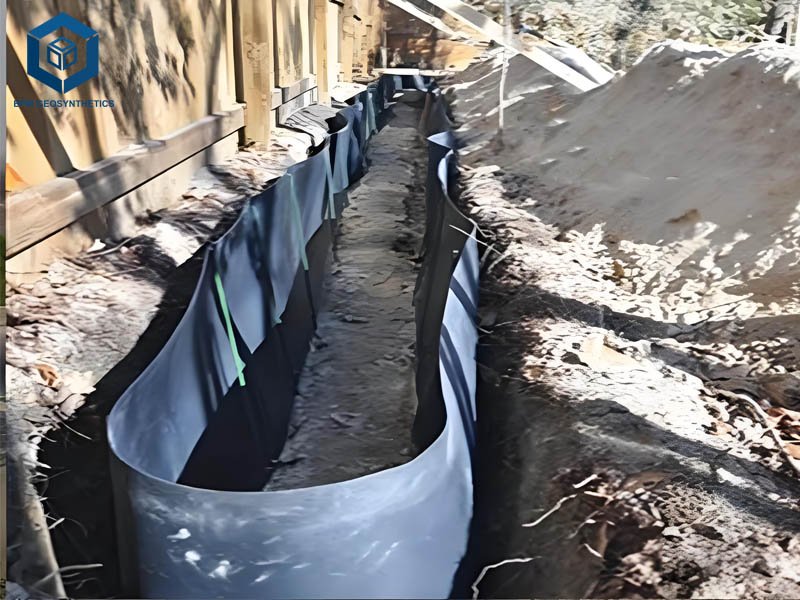
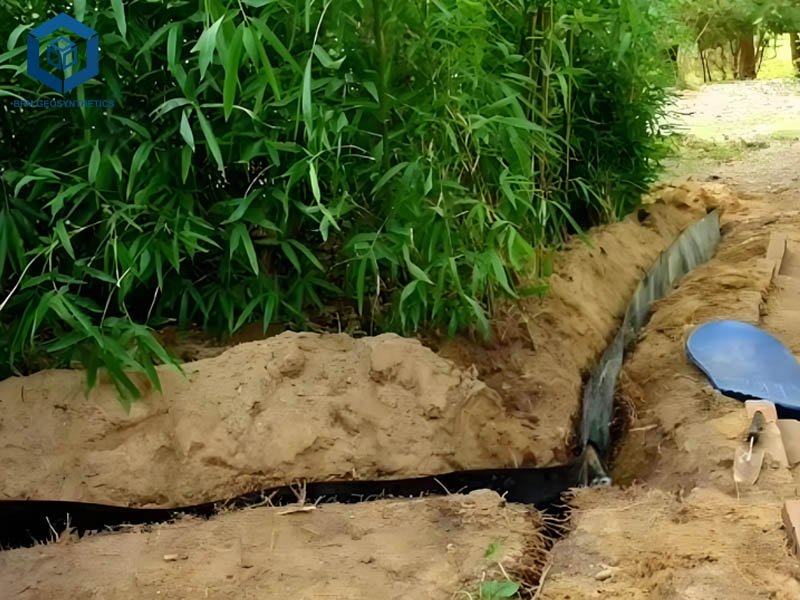
5. Industry Trends in Root Barrier Supply
Sustainability
With 65% of engineers prioritizing eco-friendly materials (2024 Geosynthetics Industry Survey), suppliers like BPM and Solmax use 15–20% recycled polyethylene, cutting emissions by 10%. By 2030, 50% of root barriers will be recyclable, per Statista.
Automation
Automated production lines, as used by BPM and Geosincere, improve thickness control by 5% and reduce costs by 10%, per Geosynthetics Magazine (2024).
Infrastructure Demand
Urbanization drives 25% of root barrier demand, particularly in Asia-Pacific, per MarketsandMarkets. Projects like Thailand’s Eastern Economic Corridor increase orders by 15%.
6. Conclusion
The top 7 root barrier suppliers for 2025, led by BPM Geosynthetics and Geosincere, deliver 95% seepage control, 50–100-year durability, and 15–25% cost savings. From urban landscaping to infrastructure protection, these suppliers offer high-quality, sustainable solutions. Contact BPM Geosynthetics(BPM Geeomembrane) for quotes and elevate your 2025 projects with reliable root barriers.

